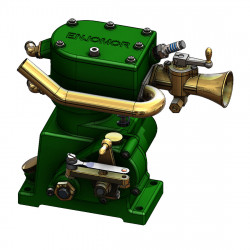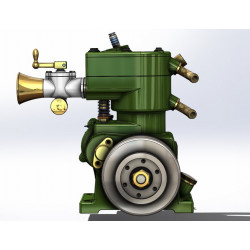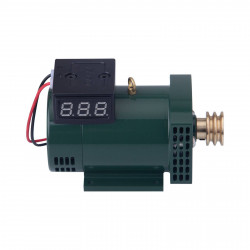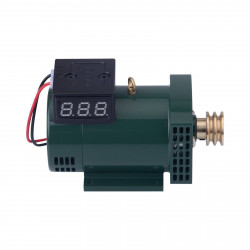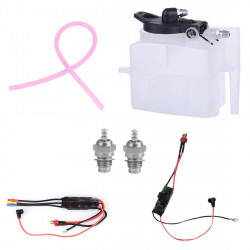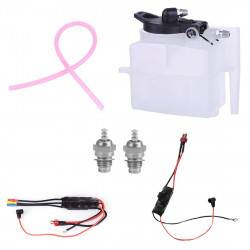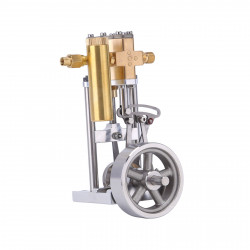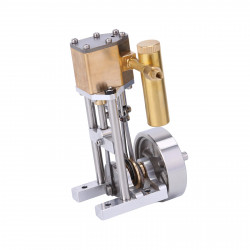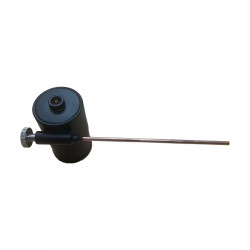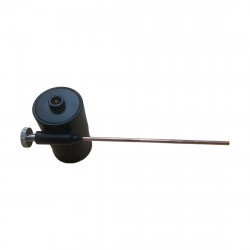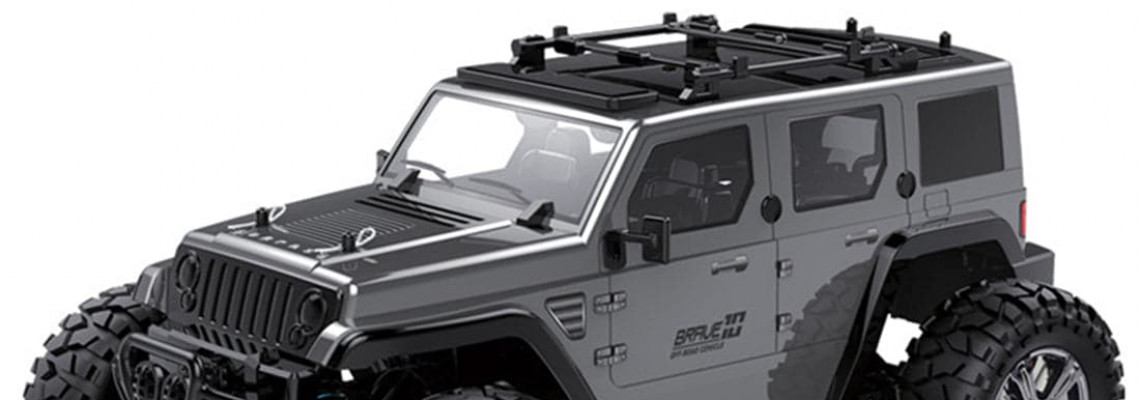
A Beginner's Guide to RC Car Maintenance and Care
Welcome to our introductory guide to caring for and maintaining RC cars! Radio-controlled (RC) automobiles need routine maintenance to function at their peak, just like any other mechanical device.
Knowing how to care for your RC car properly can significantly extend its lifespan and improve its performance, regardless of whether you're new to the hobby or an experienced enthusiast seeking a refresher.
In this article, we'll review the essential parts of remote-controlled cars, explain simple and complex maintenance methods, provide storage tips, and even show you how to break into a nitro engine.
Regardless of the model or kind of car you own, this thorough guide is intended to provide you with the information and assurance you need to maintain your remote-controlled vehicle in good condition for many years to come.
Let's get started!
Understanding Your RC Car
It's essential to become familiar with the fundamental parts of your RC car before beginning any maintenance or care. This information guarantees that each item receives the proper attention and assists you in diagnosing any problems as they occur.
The main parts of the majority of RC cars are listed below:
The Chassis
Your RC car's chassis holds all of its parts together and acts as its base construction or foundation. The purpose of the chassis is the same regardless of the kind and model of your remote-controlled car. Regarding upkeep and care, look for any bends, dents, or breaks in the chassis that can affect how well it performs.
Suspension System
The suspension system, which keeps the tires in contact with the ground and absorbs shocks, is an essential component of your car's handling ability. Usually, this system consists of parts like links, dampers, and springs. Maintaining your car's responsiveness requires checking the suspension system for wear or damage.
Wheels and Tires
The wheels and tires supply the traction and grip required for steering, braking, and acceleration. To ensure optimum road performance, they must be maintained through routine wear and tear inspections.
Motor
Brushless and brushed motors are the two types of RC car motors. Although brushless motors are more efficient and have a longer lifespan, RC cars have been using brushed motors for decades. The type of motor you have will determine how it has to be maintained.
Electronic Speed Controller (ESC)
The ESC regulates the vehicle's speed and connects the motor and battery. It is essential for giving the exact control needed in competitive settings. Keep an eye on the ESC's temperature because it might overheat and cause damage or power outages.
Battery
Since the battery powers your electric remote-control car, it needs specific care for charging, storage, and maintenance. Lithium Polymer (LiPo) and Nickel-Metal Hydride (NiMH) are the two primary battery types found in RC cars, and each has unique maintenance requirements.
Transmitter and Receiver
The receiver is the part of the car that receives the radio signals from the transmitter, and the transmitter is the remote control you hold while driving. Properly maintaining these gadgets guarantees a solid and reliable connection between you and your vehicle.
Now that you have a basic understanding of its parts, you can proceed to the following section, where we will discuss essential maintenance advice to keep your RC car in top shape and guarantee top-notch performance.
An Introduction to Basic Maintenance
For your RC car to continue operating effectively and performing well over time, maintenance is essential. You should adhere to the following crucial maintenance procedures:
Regular Cleaning
Frequent cleaning is the foundation of your RC car maintenance regimen. Debris and dirt can impair performance, lead to wear and tear, and even cause specific car parts to break down.
Cleaning the External Parts
To remove loose dirt from the RC car's body, use a basic, gentle brush. For more difficult-to-remove grime, a light mist with a hobby-grade RC cleaner ought to be sufficient. Before putting the automobile away, dry it off with a gentle cloth.
Cleaning Intricate Mechanical Sections
The internal components of the vehicle, including the suspension and gears, should also be cleaned regularly to eliminate dust and foreign objects. These sensitive parts can be cleaned with compressed air cans or fine brushes. When cleaning, take care not to harm them.
Battery Care
Your RC car's performance and lifespan are ultimately determined by its battery. The battery life may be considerably reduced if the battery is fully depleted before being recharged. The best way to extend the life of NiMH batteries is to charge them gradually and steadily.
Never allow the voltage per cell of LiPo batteries to fall below 3.0V. Batteries should always be kept dry and cool, and they should be periodically inspected for leaks or swellings.
Tire Check & Replacement
Check the tires frequently for indications of wear and tear. Worn tires can significantly diminish the RC car's grip and traction, impairing performance. Additionally, make sure the tires are clear of debris and clean. Depending on their state and amount of use, tires should be replaced as needed.
Check Alignment & Tighten Screws
Make sure all fasteners and pieces are securely fastened and the wheels are correctly aligned before each run. This will stop the loosening brought on by the RC car's vibrations. Avoid overtightening, though, since this may peel the screws and make them useless.
If you incorporate these simple maintenance procedures into your daily routine, your RC car will remain in top condition and offer the finest performance and durability over time.
We'll then discuss more complex maintenance techniques for anyone who wants to improve the performance of their RC car.
Your Guide to Advanced RC Maintenance
If you feel confident performing basic maintenance, you can switch to more complex maintenance methods. These are intended to improve the longevity and performance of your RC car even more.
Servicing the Motor
Your RC car's speed is directly influenced by its motor. The maintenance procedure for your RC car differs according to the type of motor it has.
Brushless Motor Maintenance
Brushless motors require less maintenance than their brushed predecessors. Cleaning and bearing lubrication are necessary, though, on occasion. This entails carefully removing the motor, using the right cleaners to clean the rotor and inside, and lubricating the bearings using bearing oil.
Brushed Motor Maintenance
Brushed motors require a little more attention. They entail maintaining the bearings, changing the brushes as they wear out, and cleaning the commutator—the area of the motor where the brushes make contact.
Gear System Maintenance
The gears on your remote-control car occasionally need to be cleaned and inspected for wear or damage. Any worn-out or damaged gears need to be replaced right away.
To guarantee smooth operation, use a brush or compressed air to remove any debris or grit that has become stuck in the gear teeth after a few runs. Then, add a thin layer of an appropriate lubricant.
Tuning the Suspension
Suspension tuning influences your RC car's response to different driving situations, jumps, and terrains. Minor changes can significantly enhance the suspension's performance.
This may entail altering the angle of the shock absorbers, modifying the springs' preload, or changing the shock oil.
Try out various configurations to determine which one works best for your driving circumstances and style.
Camber Adjustment and Wheel Alignment
When viewed from the front, the camber is the angle at which the wheels are slanted with respect to the vertical axis. Adjusting the camber can improve your RC car's handling while cornering.
Wheels must also be aligned properly for the best handling. Adjusting the toe angle—the angle formed by the steering axis and the vertical axis when viewed from above—is part of this. To ensure your RC car handles at its best, check its alignment frequently and modify it as necessary.
Using advanced maintenance techniques gives you the chance to improve your RC car's performance even further.
You can keep your RC car in top shape, prolonging its life and optimizing its ability for off-road or track excursions by combining simple maintenance practices with sophisticated methods.
The Break-In Procedure for Nitro Engines
For Nitro engines to operate effectively and survive longer than their electric counterparts, a suitable break-in procedure is required. The first few fuel tanks you put in your car are a significant part of this process.
Let's examine a straightforward yet efficient nitro engine break-in procedure.
Preparation
Make sure the engine and RC car are in perfect working order. Follow the manufacturer's assembly instructions to ensure everything, including the glow plug and air filter, is positioned correctly.
First Tank
After filling the petrol tank, turn on your vehicle. Allow the vehicle to remain motionless with the engine running for the duration of the first tank. Keep an eye on the engine's temperature to ensure it stays below the manufacturer's recommended level.
Second and Third Tank
Start moving the automobile very slowly for the second and third tanks. Allowing the various parts of the nitro engine to become used to the activities is more important than speed. Remember to replenish the fuel before every run and let the engine cool down between tanks.
Next Few Tanks
You can gradually accelerate your car with each new tank. Make sure you keep an eye on the engine's temperature and take a break between tanks to cool down. Keep doing this for roughly seven to nine tanks.
Final Steps
The engine break-in procedure is now nearly finished. You can gradually resume regular car use. For the upcoming tanks, it is still recommended to keep the runs reasonable. You can optimize the engine's performance once it has fully adjusted over time.
Keep in mind that although the break-in procedure for a nitro engine may appear drawn out, it is well worth the time and effort because it will affect the engine's longevity and general performance. Have fun racing!
Storing Your RC Car
Maintaining your RC car's performance and avoiding damage requires proper storage. Before storing your RC car for a long time, take into account these crucial steps:
Thorough Cleaning
Make sure your car is clean before storing it. This phase entails washing the car's exterior and removing any dirt or debris from its complex sections, such as the suspension and gears.
Battery Storage
If your remote-controlled car uses rechargeable batteries, be careful to store them correctly. Lithium polymer (LiPo) batteries should be kept at their recommended storage voltage, whereas nickel-metal hydride (NiMH) batteries are best kept fully charged. When storing your RC car for a long time, never leave a battery inside.
Drain the Fuel (Nitro Cars)
Make sure that all fuel has been emptied from the tank and fuel lines in nitro automobiles. Left fuel in your nitro vehicle might cause gumming and blockage of the carburetor's delicate passageways.
Protecting Tires
To avoid flat areas, remove the tires from your RC car before storing it for a long time. Keep the tires in a cool, dry place to prevent the rubber from drying out.
Choose the Right Location
Select a cool, dry place out of direct sunlight to store your remote-controlled car. Extremes in humidity and temperature can harm your RC car.
By following these procedures, you can ensure that your remote-controlled car is safe while being stored and is prepared for your next adventure.
Conclusion
Proper maintenance and care for your RC car keep it in top shape and give you the best possible driving experience. Following these maintenance guidelines will improve your RC car's lifespan and performance, regardless of your level of experience.
Do you want to improve your RC car skills? Explore V8engineforsale's high-performance RC cars and trucks, which satisfy the needs of all enthusiasts.
The HM124 Brushless Hobby Grade 1/12 Scale RC Truck can handle any terrain, while the HP161S New Brushless Hobby 1/16 Scale RC Truck will give you a burst of excitement.
